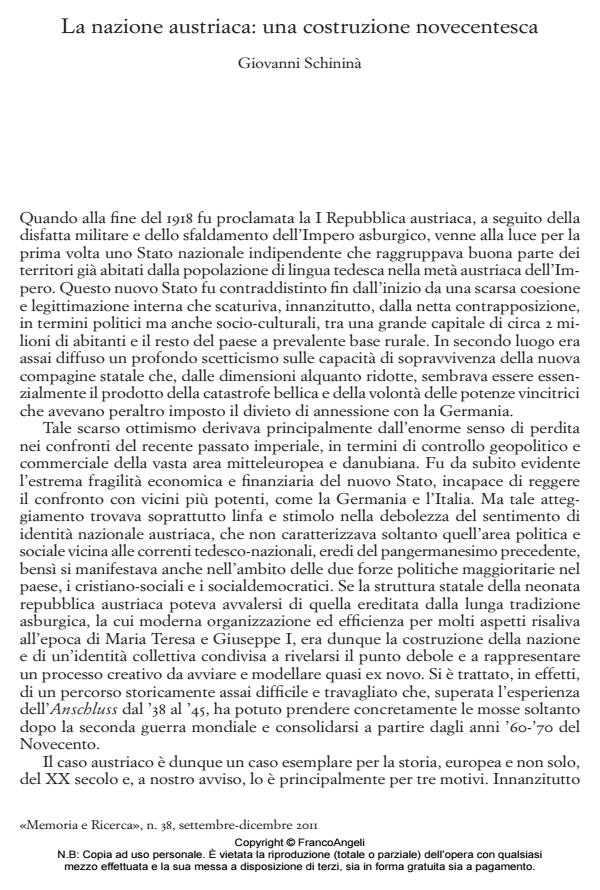The Austrian Nation: a XXth century’s construction
Journal title MEMORIA E RICERCA
Author/s Giovanni Schininà
Publishing Year 2011 Issue 2011/38
Language Italian Pages 22 P. 159-180 File size 573 KB
DOI 10.3280/MER2011-038011
DOI is like a bar code for intellectual property: to have more infomation
click here
Below, you can see the article first page
If you want to buy this article in PDF format, you can do it, following the instructions to buy download credits

FrancoAngeli is member of Publishers International Linking Association, Inc (PILA), a not-for-profit association which run the CrossRef service enabling links to and from online scholarly content.
The construction of the Austrian Nation has been a troubled process, which was only able to begin after 1945 and finally strengthened starting from the 1960s. The author firstly identifies the factors, which inhibit a specific Nation Building during the Habsburg Monarchy. Afterwards he analyses how in the First Republic, characterized by a weak political and economic legitimation and heavy external influences, the first theories and interpretations of an Austrian nation historically and culturally separated from that of Germany arose. Only the tragic experience of Anschluss and the end of II World War permitted in the course of the Second Republic the construction of a collective national identity, supported by economic success, pragmatism of the political élite and an inedited international role. The affirmation of a national identity intertwined with "Opfer-Mythos" and to the theme of co-responsibility regarding Nazism, is finally subjected to reworkings following the entry of Austria into The European Union.
Keywords: Austria, Nation, II World War, Identity, Nation-building, Opfer- Mythos
Giovanni Schininà, La nazione austriaca: una costruzione novecentesca in "MEMORIA E RICERCA " 38/2011, pp 159-180, DOI: 10.3280/MER2011-038011